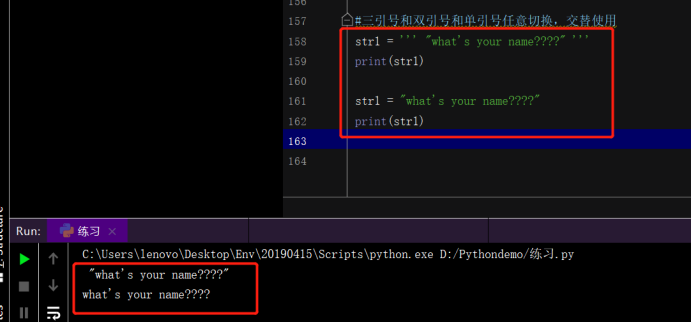# isupper:判断字符串是否全部为大写,返回值为布尔类型,是:true;否:flase
# str='hello,world'
# print(str.isupper())
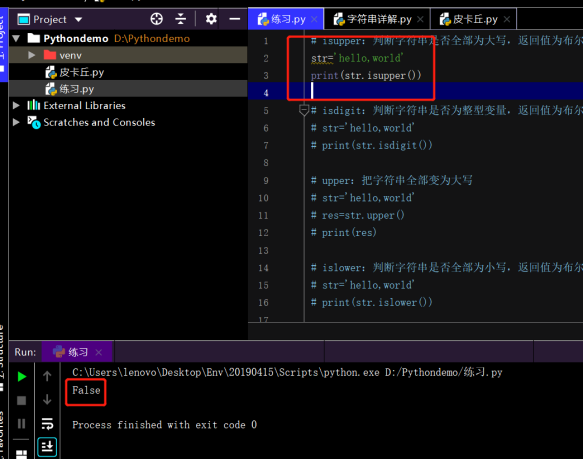
# isdigit:判断字符串是否为整型变量,返回值为布尔类型,是:true;否:false
# str='hello,world'
# print(str.isdigit())
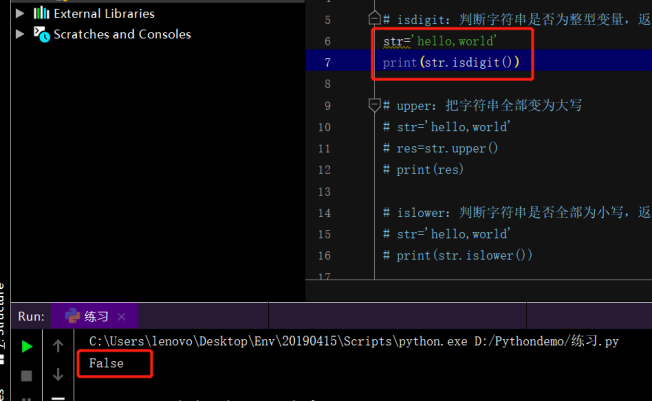
# upper:把字符串全部变为大写
# str='hello,world'
# res=str.upper()
# print(res)
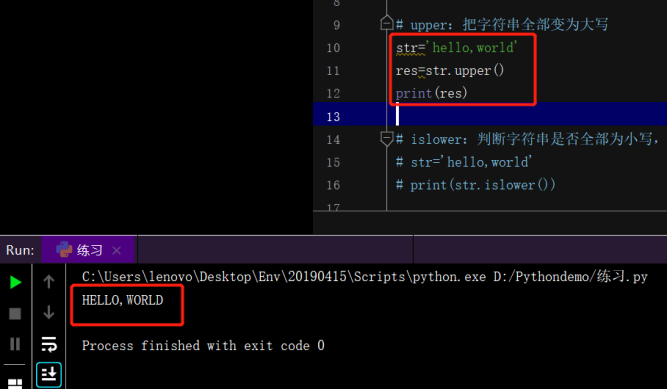
# islower:判断字符串是否全部为小写,返回值为布尔类型, 是:true;否:flase
# str='hello,world'
# print(str.islower())
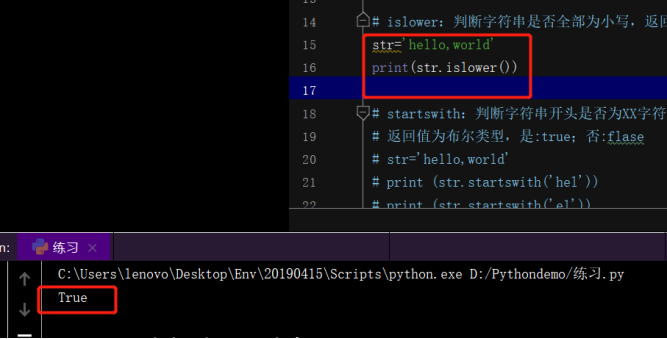
# startswith:判断字符串开头是否为XX字符,(如果是判断多个字符,则必须是连续的字符)
# 返回值为布尔类型,是:true;否:flase
# str='hello,world'
# print (str.startswith('hel'))
# print (str.startswith('el'))
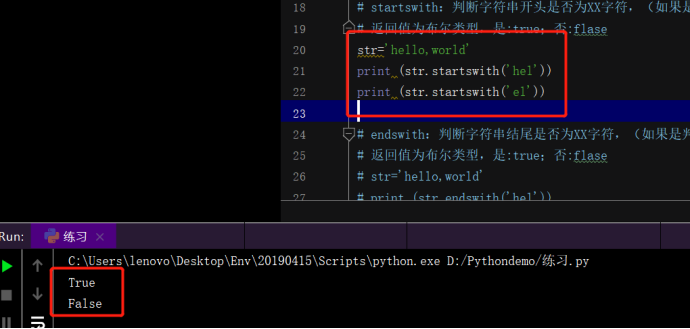
# endswith:判断字符串结尾是否为XX字符,(如果是判断多个字符,则必须是连续的字符)
# 返回值为布尔类型,是:true;否:flase
# str='hello,world'
# print (str.endswith('hel'))
# print (str.endswith('ld'))
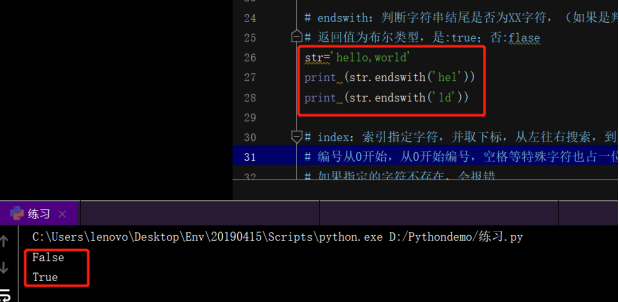
# index:索引指定字符,并取下标,从左往右搜索,到第一个字符为止,
# 编号从0开始,从0开始编号,空格等特殊字符也占一位
# 如果指定的字符不存在,会报错
# str='hello,world'
# print(str.index('d'))
# print(str.index('l'))

# rindex:索引指定字符,并取下标,从右往左搜索,到第一个字符为止,
# 编号从左往右,从0开始编号,空格等特殊字符也占一位
# str='hello,world'
# print(str.rindex('o'))
# print(str.index('o'))
# print(str.rindex('a'))
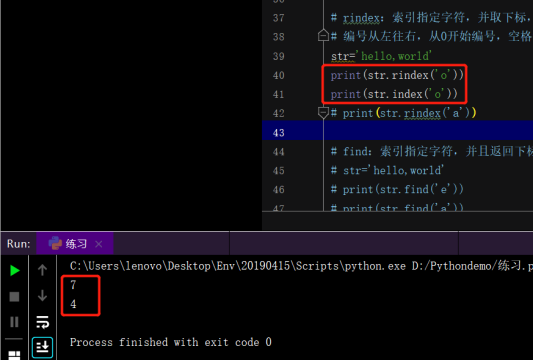

# find:索引指定字符,并且返回下标,如果没有该字符,则返回-1
# str='hello,world'
# print(str.find('e'))
# print(str.find('a'))

# istitle:判断指定字符是不是title,返回值是布尔类型, 是:true;否:flase
# title是指单词首字母为大写
# str='hello,world'
# print(str.istitle())

# title:将指定字符变为title
# str='hello,world'
# print(str.title())
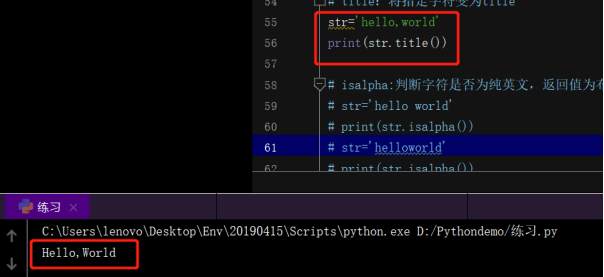
# isalpha:判断字符是否为英文或者汉字,返回值为布尔类型, 是:true;否:flase
# str='hello world'
# print(str.isalpha())
# str='helloworld你好世界'
# print(str.isalpha())
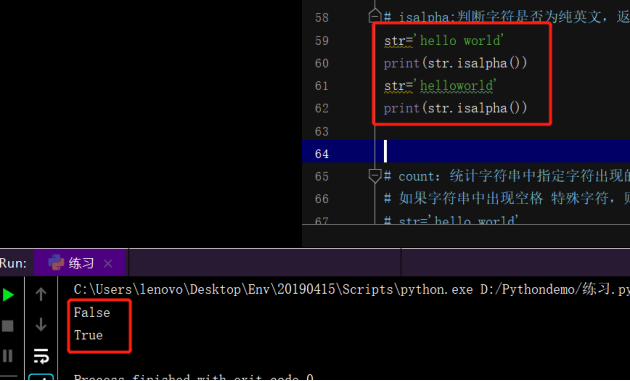
# count:统计字符串中指定字符出现的个数,返回值为布尔类型,是:true;否:flase
# 如果字符串中出现空格 特殊字符,则返回值为flase
# str='hello world'
# print(str.count('o'))

# isspace:判断字符串是否为空格,返回值为布尔类型,是:true;否:flase
# str='hello world'
# print(str.isspace())
# str=' '
# print(str.isspace())

# isalnum:判断字符串中是否只包含字符,返回值为布尔类型,是:true;否:flase
# str='hello world'
# print(str.isalnum())
# str='helloworld'
# print(str.isalnum())
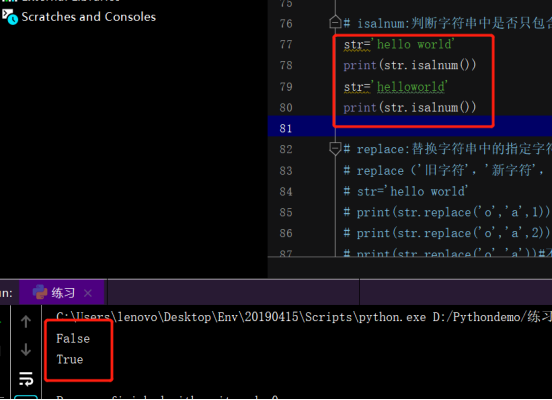
# replace:替换字符串中的指定字符,从左往右替换
# replace('旧字符','新字符',替换次数)
# str='hello world'
# print(str.replace('o','a',1))#只修改一次
# print(str.replace('o','a',2))#修改两次
# print(str.replace('o','a'))#不指定修改次数,默认全部修改
# print(str.replace('o','a',3))#次数超过字符的真实个数,全部修改
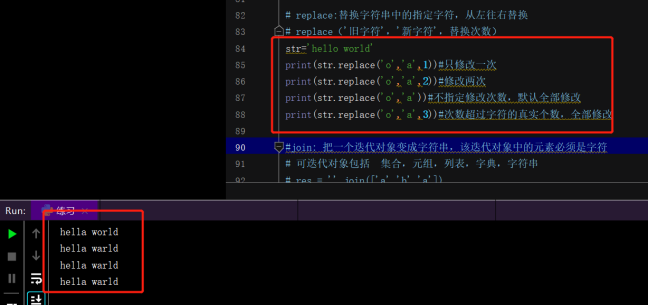
#join: 把一个迭代对象变成字符串,该迭代对象中的元素必须是字符
# 可迭代对象包括 集合,元组,列表,字典,字符串
# res = ''.join(['a','b','a'])
# print(['a','b','a'])
# print(res)
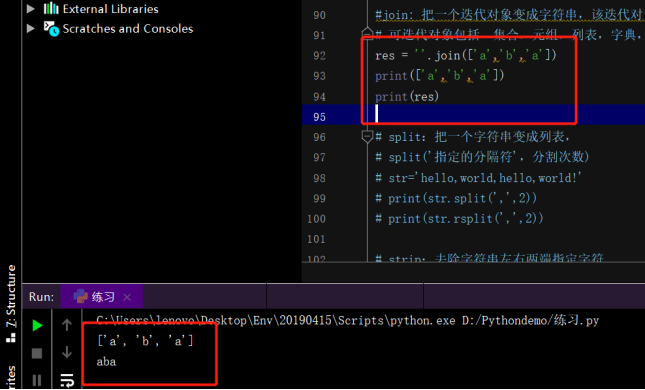
# split:把一个字符串变成列表,
# split('指定的分隔符',分割次数)
# str='hello,world,hello,world!'
# print(str.split(',',2))
# print(str.rsplit(',',2))
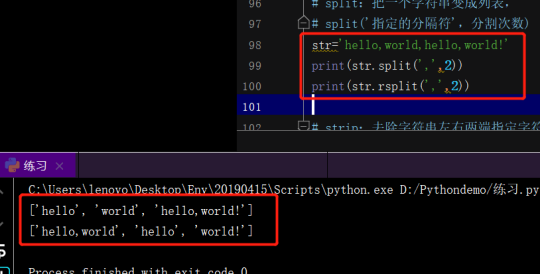
# strip:去除字符串左右两端指定字符
# str='hello,world,hello,world,hello'
# print(str.strip('hello'))
# lstrip:去除左端指定字符
# str='hello,world,hello,world,hello'
# print(str.lstrip('hello'))
# rstrip:去除右端指定字符
# str='hello,world,hello,world,hello'
# print(str.rstrip('hello'))
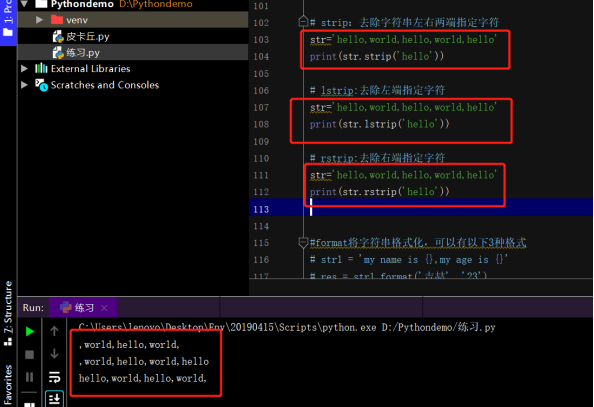
#format将字符串格式化,可以有以下3种格式
# str1 = 'my name is {},my age is {}'
# res = str1.format('吉喆', '23')
# str1 = 'my name is {1},my age is {0}'
# res = str1.format('23', '李凯')
# str1 = 'my name is {name},my age is {age}'
# res = str1.format(name='李凯', age='23')
# print(res)
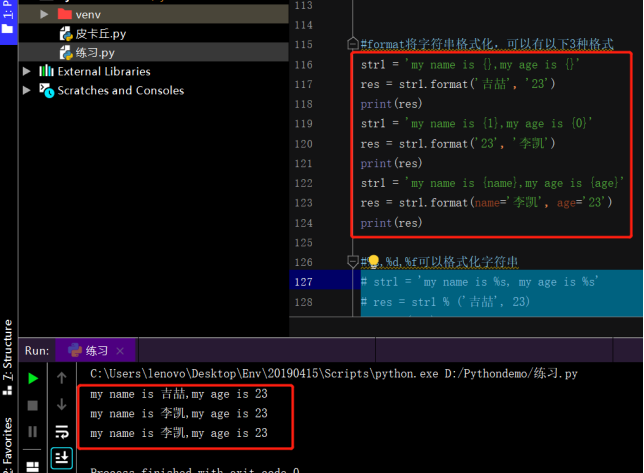
#%s,%d,%f可以格式化字符串
# str1 = 'my name is %s, my age is %s'
# res = str1 % ('吉喆', 23)
# print(res)

#利用索引或者下标取值,超出范围报错
# str1 = 'Hello,World'
# print(str1[-100])

#字符串的拼接
# str1 = 'Hello,World'
# print(str1[4]+str1[5])
# print('1'+'2')

#切片
# str1 = 'Hello,World'
# res = str1[2:5]#正向切片顾头不顾尾
# print(res)
# res = str1[-4:-1]#顾尾不顾头
# print(res)
# res = str1[:3]#索引为3往右的字符不要了(包括下标为3的字符)
# print(res)
# res = str1[3:]#索引为3往左的字符不要了(不包括下标为3的字符)
# print(res)
# res = str1[::2]#步长为2,隔一个字符取一个字符
# print(res)

#三引号和双引号和单引号任意切换,交替使用
# str1 = ''' "what's your name????" '''
# print(str1)
# str1 = "what's your name????"
# print(str1)
